Remarkable Rotorua
I was excited to be motoming in Rotorua with the Motom designer and builder, Andrew. What could possibly be better than one Motom? That’s right, two Motoms! Especially when the second Motom provided an opportunity to try the new improved version with suspension, and Andrew had ridden Rotorua before and led the way.
This trip was going to see us finally completely motom a New Zealand Great Ride for the first time, the Whakarewarewa Forest Loop. This was our fifth Great Ride in two months, following the Tasman Great Taste Trail, the West Coast Wilderness Trail, the Alps to Ocean (A2O) Trail, and the Remutaka Trail, none of which were completed owing to areas that were unmotomable or unwise to motom. Our tiny section of the Lake Dunstan Trail was too little to count.
I met Andrew at the mountainbike park on Friday afternoon where he had started riding an hour before. After the Kid’s Loop to find my feet, we rode Dipper, with a scarily narrow bridge (pictured below), Tahi, Challenge and Challenge Roadside. Some trails were easier riding without pedals, using the throttle and foot rests. We finished at 10 km to save energy and hand strength for the next day. Unexpectedly the riding felt like skiing – lots of paths in different directions, merging and crossing and going down towards the bottom, with fun turns, downhills and runs that you wanted to repeat.
I enjoyed the surrounding Californian Redwoods, planted since 1901 as a government programme discovering which exotics thrived for a forestry industry. Redwoods apparently grow even better in NZ than in California thanks to plenty of rain and a temperate climate, with some older specimens over 70 metres high. The undergrowth of verdant ferns and punga, and very few humans, added to the beauty.


Day two was the Whakarewarewa Forest Loop. This is normally 33 km but we added a diversion. Andrew has an adaptive race coming up on Te Poaka and wanted to try out the run. It also made our ride more interesting with some grade 3 sections. Grade 3 can be outside my comfort zone, and the riding was different. As pedalling in trickier terrain is hard and slow, I used the foot rests, the throttle and sat forward and moved my body to maintain balance and keep the wheels grounded. Descending a steep curved section (steep to me anyway), my tail slid out, trying to overtake my front wheels, then my front wheel started to lift above the cambered path. With a spill imminent, I somehow surprisingly got out of the skid and straightened up. A later surprise was an unseen obstacle at pace, launching one of my front wheels into the air. However I was no daredevil, being well behind Andrew who can briefly be seen in the video below, before he rode off out of sight.
Trying the new Motom with suspension was good fun. It is a smoother ride and therefore typically faster and more comfortable on stony areas and over tree roots. We will look at adding it on to the back wheel which would make the most difference, and not add too much weight. However, the need for it depends on what riding we will do ahead. For rides around town and the smooth gravel rides my current suspension-less Motom is fine.
Partway down a grade 3 trail (Whaki), a race was being run that turned onto our path, requiring non-racers to go switch to a grade 4 trail. With the Motom too wide for the grade 4 trail, we had to return up the one-way path, ringing a bell for blind corners to avoid crashing into a cyclist rocketing down. Happily my fears that the hills would be too steep to ascend were unfounded. Returning to the Forest Loop provided an easy and enjoyable (if tired) finish to 44 km of riding.
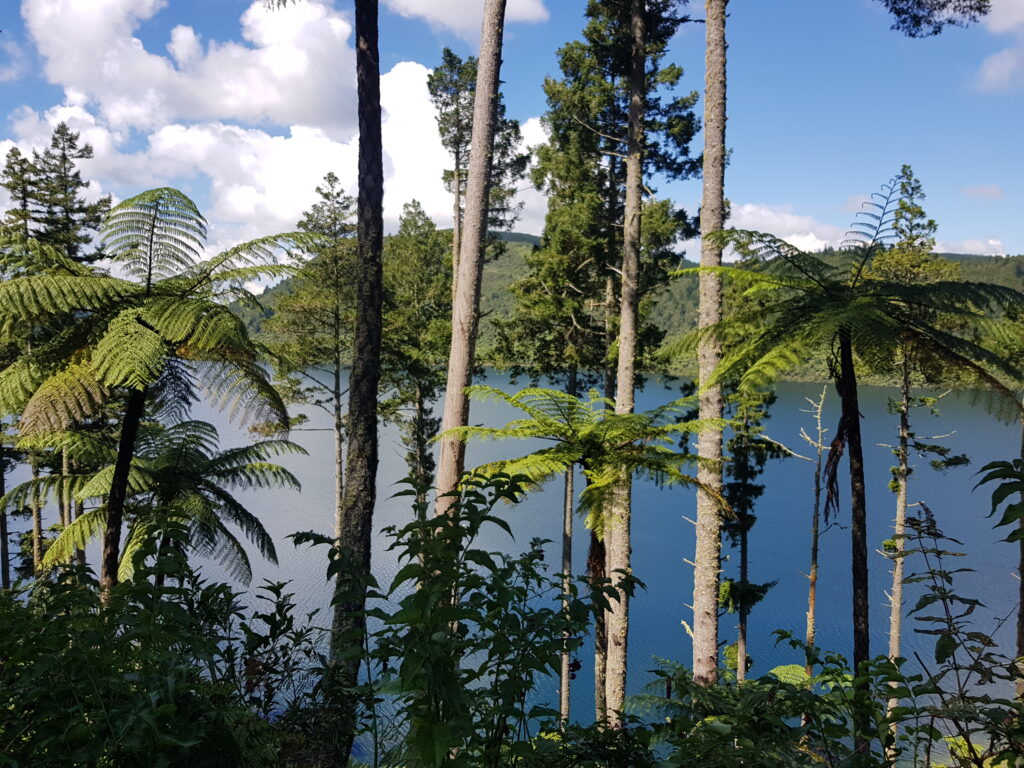

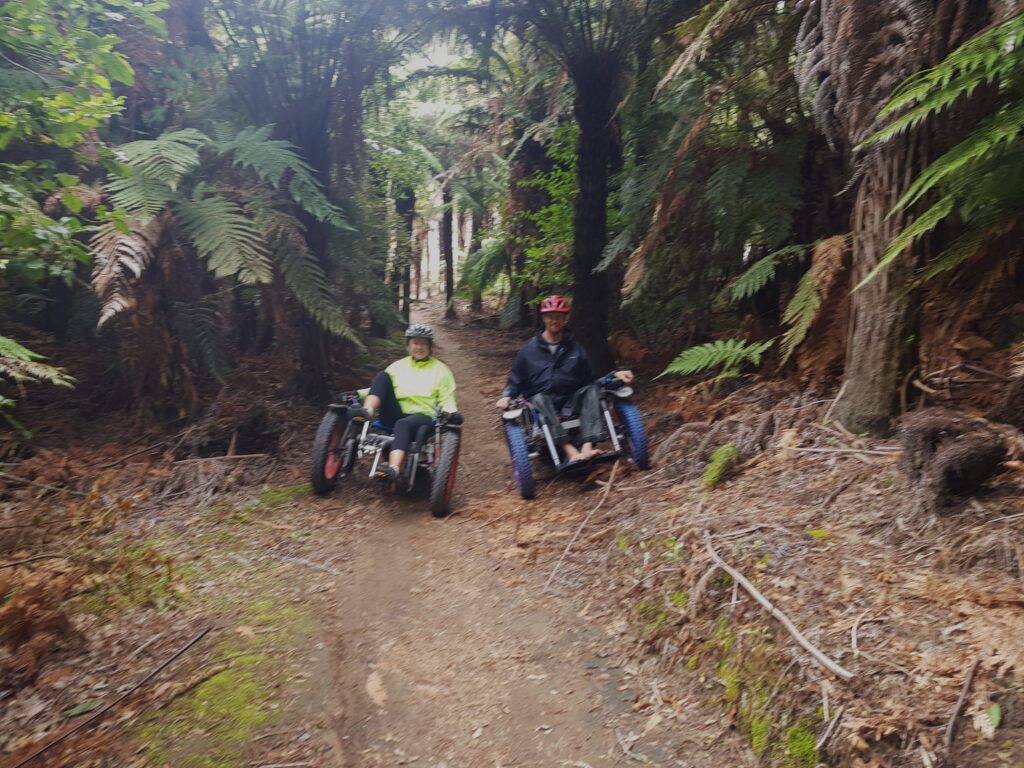
The third day saw Andrew return to the mountainbike path, while we sought different scenery.
Riding through a geothermal field was wonderful, surrounded by inhospitable land and steam. Signs about hazards warned for example that hydrogen sulphide [gas from vents] can cause loss of consciousness and death; geothermal mud can be unpredictable and extremely hot, risking injury or death; sulphur mounds can collapse releasing gas, risking once again death, and to be aware of possible sulphur fires with a purple flame. Signs also told of previous areas used for bathing that closed following deaths from fumes.
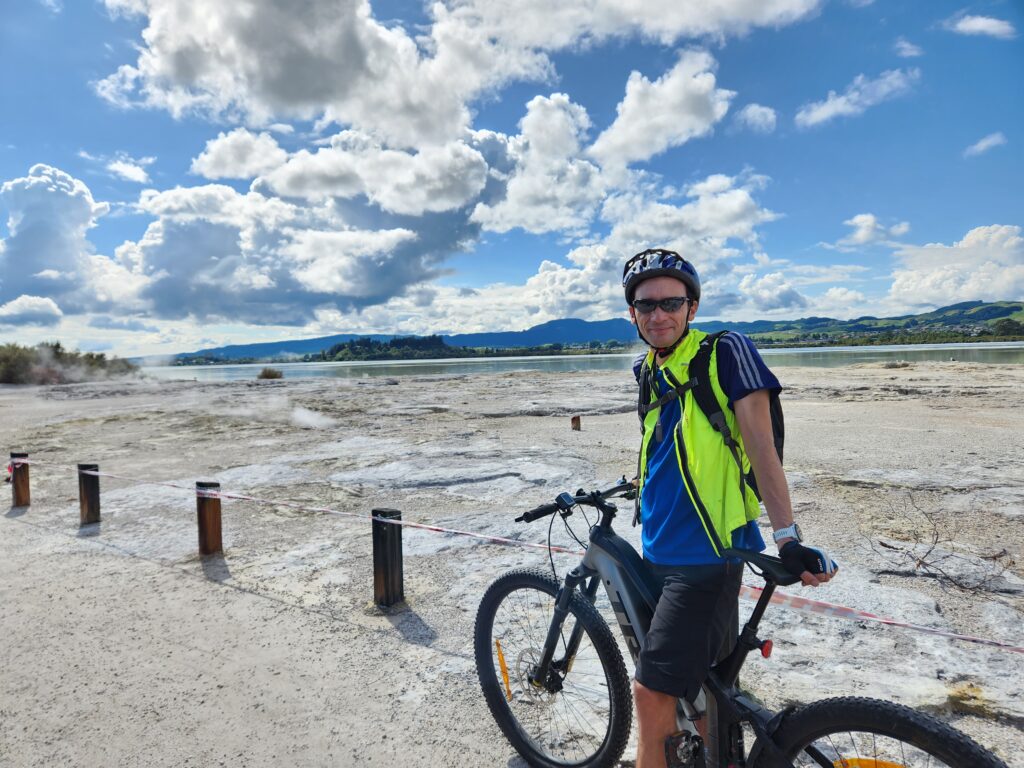
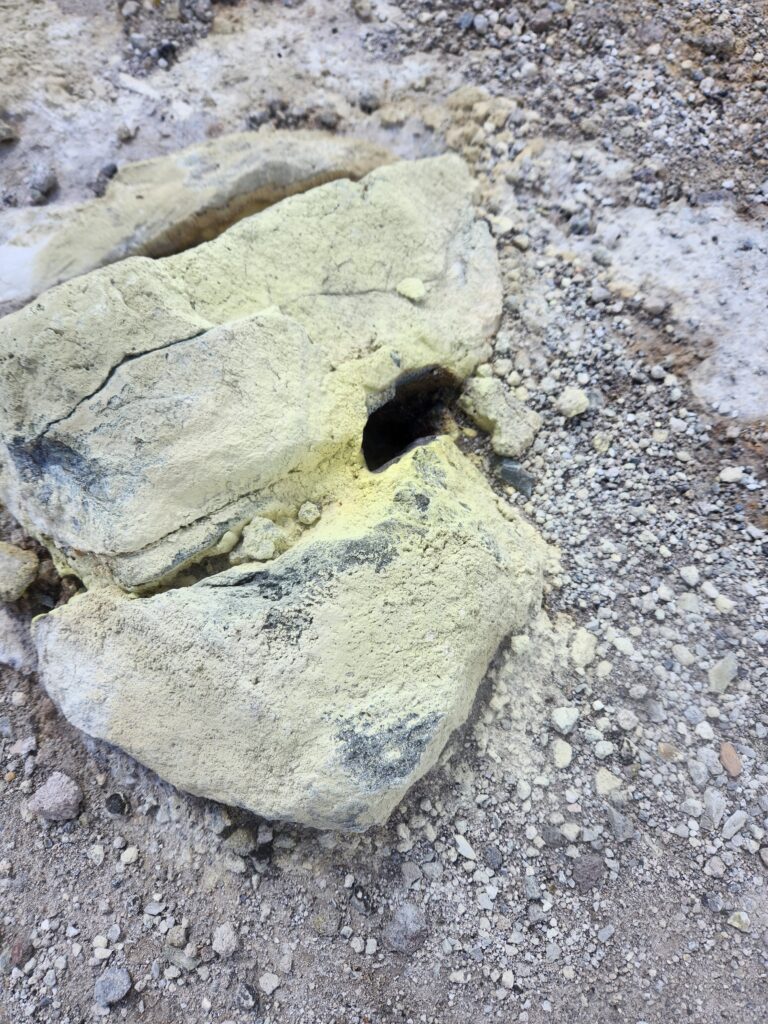

Lake Rotorua (Te Rotorua nui ā Kahumatamomoe) housed seagulls, scaup, poaka (pied stilts, pictured below in the steaming lake) and different varieties of shags, some sitting on a branch of a freshly fallen eucalyptus tree. Other storm damage closed part of the track.
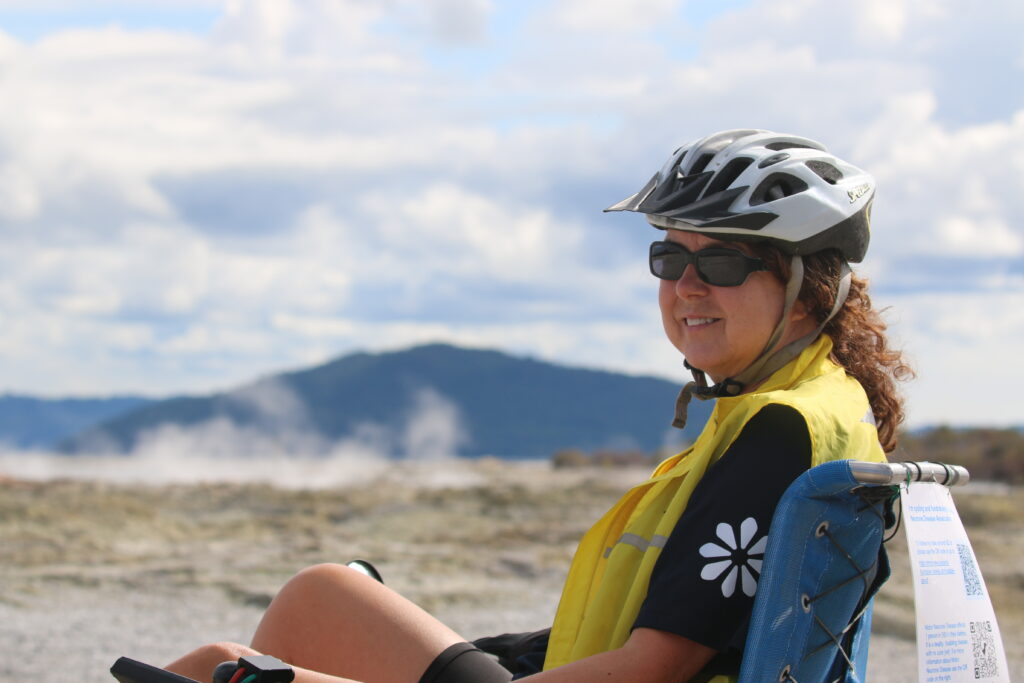
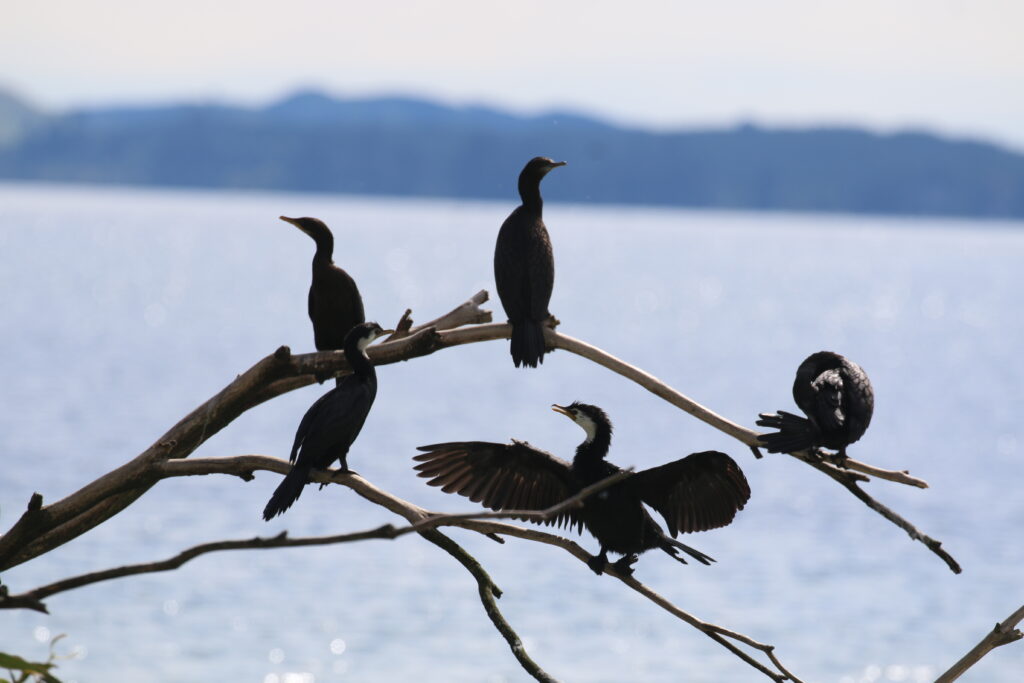

We rode back through Whakarewarewa redwoods, spotting a tomtit (miromiro) on our journey.


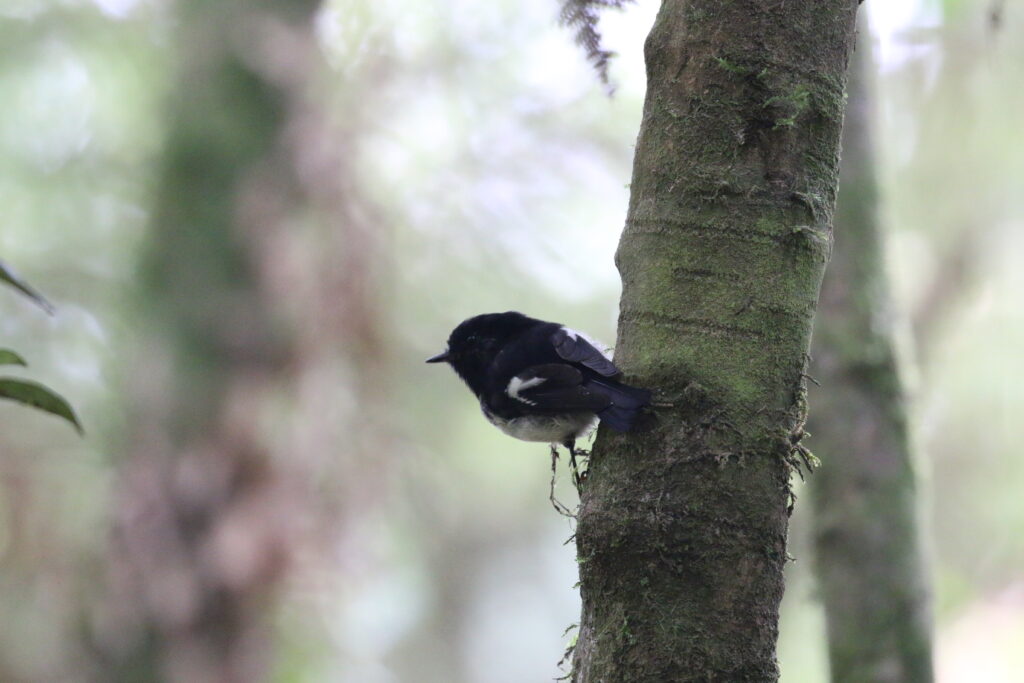
Having 2 days in the forest on enjoyable rides with no problem barriers was nicely complemented by the interesting ride through the geothermal area and around Lake Rotorua and a bonus of native birds.
We totalled 70 km of riding over the three days. Being less than 3 hours’ drive from home, I look forward to riding Rotorua again.


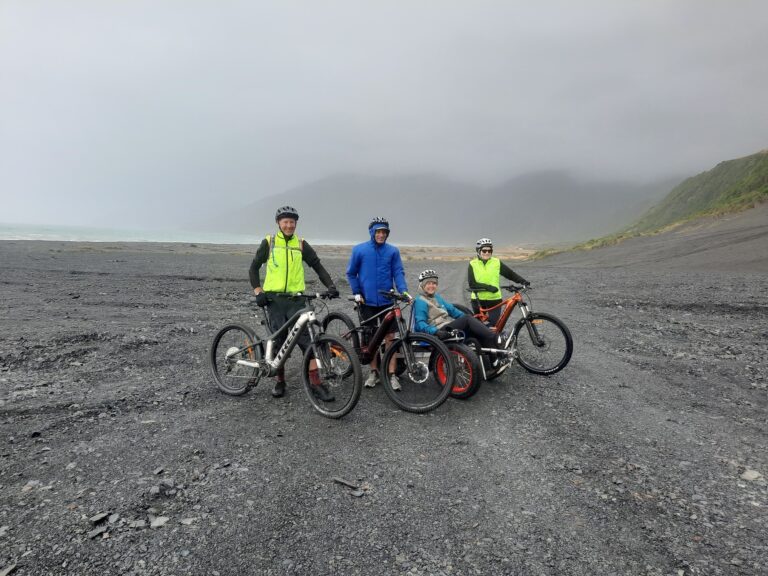

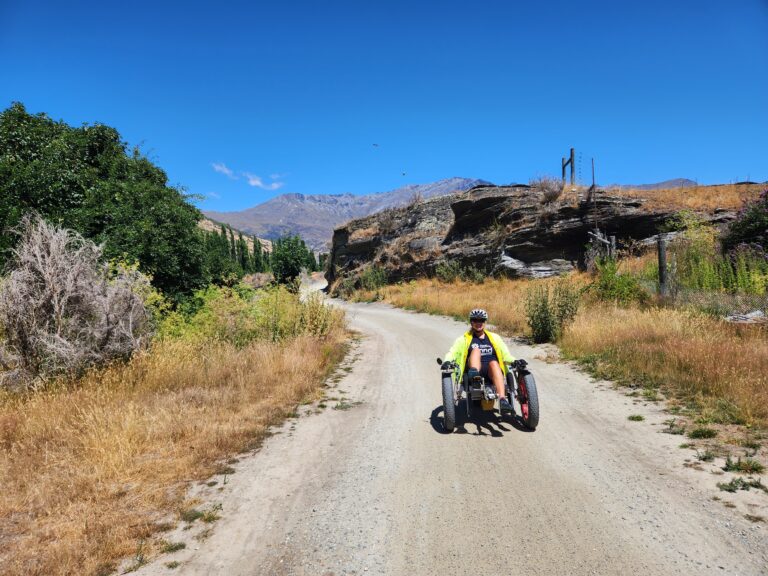
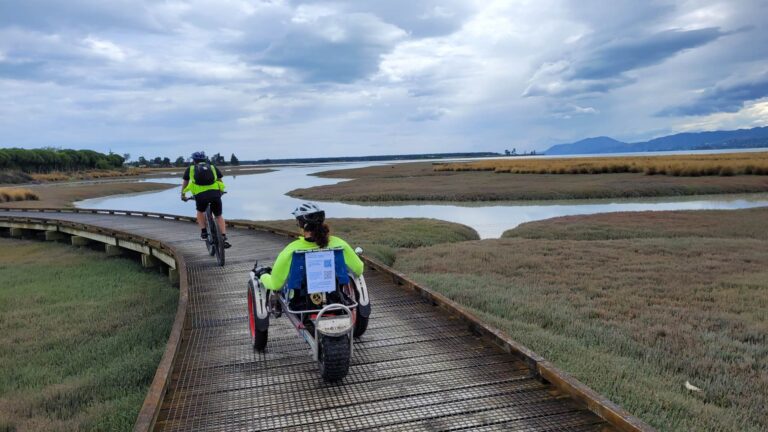

Hi Natalie. It’s always good to see where you have been and what you have been up to. So well written and interesting. Photos beautiful too.